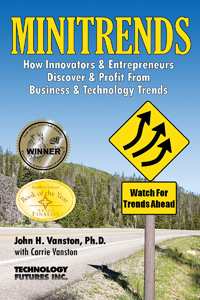John & Carrie on BOSS-Talks — Free Webinar – Mon., Nov 10, 12-1 CST
November 7, 2014
BOSS-Talks: Tech Tools Free Webinar:
“MiniTrends: Trends Inside Trends”
with Dr. John H. Vanston and Carrie Vanston
- How and where to search for MiniTrends.
- How to evaluate the business attractiveness of a MiniTrend.
- How to develop an effective MiniTrend Strategy.
- How to turn the strategy into profitable business opportunities…
-
- A Corporate Intrapreneur seeking strategies to keep your organization on the cutting edge of business and technology.
- An Entrepreneur wishing to identify, assess, and exploit attractive new business opportunities.
- An Innovative Thinker interested in gaining recognition for originality and perceptiveness.
- An Investor interested in uncovering attractive new investment opportunities.
- A Job Seeker wishing to define emerging employment possibilities.
Participants will recieve a solid basis for developing their own “MiniTrends Mindset.”
|

Tech Tools Webinar Host: BOSS-Talks’ Dr. Jan Triplett and Business Success Center provide ramp up assistance for new businesses and scaling for growing businesses.
|
_________________________
101 MiniTrends in Health Care – Trends, Drivers, and MiniTrends You Need to Know About
August 28, 2014

This image is from MiniTrends, a book by John Vanston that I strongly endorse. I’ve known John for years and did consulting work for his company, Technology Futures. His book inspired my Modern Health Talk vision. (Click image to see book. Go to end of my article to hear about the MiniTrends 2014 Conference which is based on the book.)
“What the Hell is happening to health care?”
“And is it an Opportunity or a Threat?”
An awful lot has changed in just the last few years and even more will change in the near future, with the aim of reducing (or at least containing) our health care costs. What’s behind these MiniTrends, and what is their implication for providers, payers and consumers? That’s the $1.5 trillion question. Here I talk about many, many MiniTrends–surely you can find 101 of them if you look! (I suggest attending the MiniTrends 2014 Conference (Sept. 26) to find even more.)
“It is not the strongest or the most intelligent who will survive but those who can best manage change.” – Charles Darwin
That quote is important, because 429 of the original Fortune 500 companies [1955] are no longer in business today. That’s a scary thought for those sitting at the top of the healthcare mountain, because they know they must adapt to the megatrend of health reform and Obamacare (the Patient Protection and Affordable Care Act) or die. And they are looking down with fear at the hungry competitors who are already exploiting the many related minitrends, because for them these are times of great opportunity.
Here are the 45 healthcare companies that are included in the 2014 Fortune 500:
- Insurance: United, WellPoint (Anthem), Aetna, Humana, Cigna, Centene, HealthNet, WellCare, Molina Healthcare
- Services: HCA, Community Health Systems, Tenet, DaVita Healthcare Partners, Universal Health Services, Vanguard Health, Kindred Healthcare, Express Scripts, Quest Diagnostics, Omnicare, LabCorp of America, Quintiles
- Medical Products: Abbott, Medtronic, Baxter, Stryker, Becton Dickinson, Boston Scientific, St. Jude
- Pharmaceutical: J&J, Pfizer, Merck, Eli Lilly, Abbvie, Amgen, Bristol Myers Squibb, Gilead, Biogen Mylan, Celgene, Allergan
- Wholesalers: McKesson, Cardinal, AmeriSource Bergen, Henry Schein, Owens & Minor
They represent nearly 10% of today’s Fortune 500, but if history is our guide, some 86% of them are doomed to obscurity or worse if they don’t adjust to Obamacare and its spawned minitrends.
To me, health reform is all about getting the incentives right, and these top companies, as well as those at the bottom of the heap, have strong motivation to act. But just who will benefit from their actions?
To help consumers and health care companies of all sizes, this article has three sections:
- the driving forces behind disruptive innovation and health reform,
- some of the resulting minitrends and their impact, and
- a short discussion of how to discover other minitrends and their important intersections.
Driving Forces, an Environment Ripe for Change
I won’t get to all the drivers or trends defining the future of health care but want this section to give a big-picture perspective of what’s behind the massive and growing problem, and the need for solutions.
High & Rising Health Care Costs
Americans already pay over $3 trillion/year, or about twice what other industrialized nations pay, but according to the World Health Organization we still live sicker & die younger. This could get worse with the aging population, but there’s also a real opportunity to cut spending in half while improving care.
 Aging Population
Aging Population
76 million babies were born after WW-II, between 1946 and 1964, but America wasn’t prepared for that boom, and neither were other nations. There weren’t enough hospitals or pediatricians, or schoolteachers, textbooks or playgrounds, or even bedrooms in our homes. This “baby boomer” generation strained institutions every step of the way, and now the boomers are getting ready to retire.
The boomer demographic is politically active and represents a substantial voting bloc – they had no voice as infants and children, but now they do.
- Not only has the world population more than doubled in the last 66 years since I was born, but two-thirds of all people who ever lived to age 65 are still alive today.
- They have better nutrition and technology innovations to help extend their lives.
- Year 2000 marked a milestone. There were more people over 60 on the planet than children below 5, for the first time. (U.N.)
- By 2029, when all baby boomers are 65 years and over, more than 20% of the U.S. population will be over 65. (US Census)
- And by 2050, the older generation will be larger than the under-15 population. (U.N.)
- In 1940, when the average lifespan was 63.5 years, some 9M Americans received Social Security, and the ratio of workers to beneficiaries was 159 to 1.
- By 2010, the average lifespan was 78.3 years, and nearly 39M people received Social Security benefits. The ratio of workers to retirees was already down to 2.9 to 1.
- That was BEFORE the first boomer turned 65. Today, more than 10,000 US boomers reach age 65 every day, but despite living longer than previous generations, they are less active, have higher rates of chronic disease & disability, and spend more on medical care. 40% of them are low-income and will need public assistance.
Eldercare Costs Rise as Seniors Live Longer
Caregiver Costs
78% of seniors needing long-term care receive it from family or friends, but that is a heavy burden placed on the 65 million unpaid family caregivers that the AARP values at over $480 billion/year. Many of them spend more years caring for their parents than a child – an average of 20hrs/wk. In some cases, low- and high-tech solutions can help, such as remote sensor monitoring and video calls. So I’ve posted over 500 articles about them, include hundreds of external links in our Resources section, and pin the best health care infographics on Pinterest (now well over 1,000 of them).
 Effects of Public Policy
Effects of Public Policy
Misguided policies with unintended consequences have contributed to our nation’s relatively poor health and rising care costs. While it’s well known that public health initiatives for preventing illness, such as immunizations and sewage & water treatment, cost much less than treating people after they get sick, our political process often prevents officials from doing what’s right for the nation and funding public health care. The same goes for programs that help people out of poverty so they can contribute to the economy and tax base and not needing public assistance. To understand why, just follow the money.
While it may seem odd to suggest that lobbying – and in particular Citizens United, the Supreme Court decision that personifies corporations and allows unlimited corporate campaign contributions through political action committees – threatens our nation’s health, but it does.
We can thank the corrupting influence of wealthy special interests for the fact that our nation is not protected from disease-causing Frankenfoods including soda and processed foods, or unrestricted marketing of the lowest-quality, sugar-laden foods to our children. When money rules politics, our agricultural lands, soils and aquifers are depleted through oil-dependent industrial farming supported by billions in federal farm subsidies. And the land and water supply is made toxic from the lack of industrial oversight. Katie Couric, for one, is “Fed Up.”
Politicians often speak of programs with trillion-dollar savings over 10-20 years, but trillion-dollar health reform savings could be reached every year if there wasn’t such strong opposition from those in the medical industrial complex who would see their revenues cut by $1.5 trillion/year. Why else do you think they spend twice as much on political lobbying as the military industrial complex?
Tech Innovation
Electricity has also contributed to poor health, as have electric lights, elevators, air conditioning, cars, computers, televisions, and personal electronics. We drive to work and school and the grocery store instead of walking or riding a bike, and we now live a rather sedentary lifestyle. Our DNA and natural evolution have not kept up with over 200 years of “progress.”
Largely as a result of technology, over two-thirds of adults (69%) are now obese or overweight, and 21% of our medical spending goes to obesity-related illness, such as hypertension, type 2 diabetes, high blood pressure, coronary heart disease, asthma, sleep apnea, and other serious illnesses. Obesity is a BIG problem, an American Epidemic that costs us more than just high medical bills. Obese and overweight people earn less, and they have less fun, more pain, and die earlier.
Modern Culture
Americans today sleep about two hours less per night than they did 200 years ago, before electricity, and they live in an always-connected culture where success is measured in money and power. But that culture has led to workaholism, keeping up with the Jones’, dual-income families, a widening wealth gap, and unhealthy stress.
In her book, Thrive, Arianna Huffington writes a passionate call-to-arms, looking to redefine success with more emphasis on meditation, mindfulness, sleep, unplugging, and giving. In short, she wants to help change our culture and improve our health.
Consumers with No Skin In The Game
Consumers tend to abuse things that are free. That includes insurance that serves as prepaid medical care, and it doesn’t matter if it’s provided by their employer or government through Medicare & Medicaid. When all consumers see is small co-pays and not the real costs, they have no financial incentive to seek the best value in medical care or compare different providers and care options. They’re less likely to make healthy lifestyle decisions that reduce the need for medical care. Instead, they do what comes naturally and feels good. It’s human nature when the incentives are wrong.
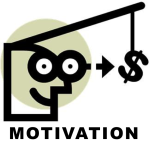 Mixed Incentives
Mixed Incentives
Besides the screwy consumer incentives are the different motives of public-sector organizations and private industry. Industry, which is often legally bound to serve investment interests of shareholders and not the public, measures success in business terms such as profit, ROI, and payback period. This leads to relatively short-term investment decisions. Governments measure success differently and over longer time periods, so they can justify longer-term investments.
One might question the medical ethics of profiting from illness, and an example of that is how health care providers view patients – as paying customers. They work to keep them (paying) by treating symptoms, because their profit comes from a fee-for-service delivery model of managing (and arguably promoting) chronic illness. Those who practice medicine in today’s healthcare system see no money in preventing illness and avoiding the need for medical care, so medical schools teach more diagnostic skills than prevention skills.
But that’s not the way governments, employers, and insurers think of health care. They know that public health and wellness programs improve workforce productivity and reduce overall health care costs. Their motives, however, often conflict with that of industry, which is why two years ago I proposed a hybrid, public/private model of health care.
The Winds are Shifting and giving rise to Many MiniTrends
The healthcare path that we’ve been on is not sustainable, and clearly some serious reforms are needed. Trillions of dollars are at stake (each year, not spread over 10-20), and some players feel threatened while others see opportunity. This difference led to intense political debate in the run-up to the passing of Obamacare, and in the years since.
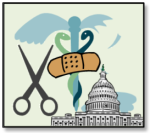
Health Reform
Health reform is the megatrend that some see as starting at the State level in Massachusetts and moving to the National level with Obamacare, but it really started earlier than that and is still a work in progress. In Understanding Obamacare, Dr. James Rohack gave some history of healthcare and insurance dating back to before the Great Depression. Since Obamacare passed, Vermont has enacted an even more aggressive, state-level single-payer system, which is the first in the nation. All of these reform efforts were put in place to address the high and rising costs of care, which could bankrupt the nation without decisive action.
Government Subsidies
Contrary to a common myth, Obamacare won’t add to the federal deficit, even with Medicaid expansion and subsidies to help low-income families buy private insurance. According to the nonpartisan Congressional Budget Office, the new law is expected to actually cut the deficit by $124 billion over 10 years, in part by reducing overpayments to private insurers that run Medicare Advantage plans. It’s also because the newly insured consumers can now use clinics, telehealth, and other care options that are less expensive than the ER.
Insurance Competition
Obamacare adds new competition across the entire health care delivery system, starting with insurance and the ability to easily compare bronze, gold and platinum plans on public and private insurance exchanges, and the response of insurers is creating many other minitrends.
During the political debates leading to Obamacare, insurance companies agreed to some pretty severe restrictions designed to force competition in exchange for a government mandate that would expand the insurance pool for all insurers. As a result of the compromises, the new law will now:
- Prohibit insurance companies from cherry-picking the healthiest customers and refusing to sell coverage to people simply because they have one or more pre-existing conditions;
- Prohibit them from canceling coverage when people get sick just to avoid paying for our care;
- Prohibit insurers from charging women more than men for comparable coverage and not allowing them to charge older folks more than three times as much as younger folks;
- Require them to spend at least 80% of premiums on actually paying claims and improving care;
- Allow young adults — who form the largest segment of the uninsured — to stay on their parents’ policies until age 26; and
- Reduce the number of uninsured Americans by at least 30 million if all the states agree to accept federal dollars to expand their Medicaid programs. (Of course, many states didn’t agree to that.)
 Wellness Programs
Wellness Programs
Because insurers can no longer profit from denying medical care, they have embraced wellness programs to lessen the need for it in the first place. These wellness programs were developed for their self-insured corporate clients who saw them as ways to keep workers healthy and productive. Now they’re being offered to individual clients as well, to control costs. But how do they get consumers on board?
Redefining Insurance
Wellness programs are one way to encourage healthier lifestyle decisions, but that’s just part of a bigger aim – to redefine the purpose of health insurance and replace prepaid medical care with protection against catastrophic illness & injury. The hope is to give consumers more skin in the game, to help them find the best value in medical care, and to extend competition to care providers as well.
They now offer low-cost policies with high deductibles to give a financial incentive, but consumers still can’t comparison shop if it’s an emergency or if providers keep their charges secret and refuse to show them ahead of time. Investigative research shows that the cost of medical procedures can vary significantly from one facility to another across town, even for similar care, so insurers are pressuring them to make their charges more transparent, and they’re developing tools to help consumers shop.
Concierge & Membership Models
The doctors who are pressured to see more patients are frustrated that they have little time to listen, think or do other critical activities, but patients are frustrated too. This, and the new insurance models, is leading to various private pay models for health care delivery, including telehealth, private memberships, and concierge services. As Dr. Stephen Schimpff says, the higher costs are often offset by lower premiums of high-deductible insurance plans. He thinks insurers may start buying memberships or retainers for their clients as a cheaper alternative for better care.
TeleHealth
Most of the arguments used by TeleHealth opponents are, in my view, just smoke screens for protecting their share of the ridiculous $3 trillion/year that Americans spend on health care. State medical boards that require an initial face-to-face visit, for example, are restraining trade and preventing patients from easily going elsewhere. But those barriers are beginning to evaporate in the wake of the overwhelming proof of TeleHealth’s many benefits. Dial-a-Doc services are thus gaining momentum and are shaping healthcare for the better.
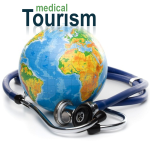 Medical Tourism
Medical Tourism
Offshoring American health care, according to Dr. Robert Pearl, is another growing trend, and the new competition is lowering costs and improving care at home too. Over 8 million people worldwide, and 1.3 million Americans, already cross international borders for better and cheaper care. Some of the popular destinations include Argentina, Brunei, Cuba, Colombia, Costa Rica, Honk Kong, Hungary, India, Jordan, Lithuania, Malaysia, The Philippines, Saudi Arabia, Singapore, South Africa, South Korea, Thailand, Tunisia, and the UAE. In Malaysia, for example, one can save 65-80% over the cost of having a procedure done in America, and often the total cost, including airfare and 5-star hotel on the beach for recovery, is less than the annual insurance deductible.
Home Health Care Delivery
In-home care is one of the biggest growth industries of the last twenty years. It makes sense, because elderly folks don’t want to be chained down to a nursing home, and an in-home care aid gives them independence without sacrificing their health needs. The ability to deliver skilled medical care at home only accelerates this trend.
Medical house calls are being directed at the highest cost patients first – the elderly – as a solution to the rising Medicare costs. But this delivery model will expand to others for convenience, because a nurse with digital testing gear can make a house call and do a video consult with a doctor if needed and save money in the process.
The Independence at Home Demonstration, authorized by Obamacare, is testing the viability of home health care. By avoiding just one ER visit, with an average cost of $1,500, it’s easy to justify 10 house calls, and the savings are even greater for avoided hospitalizations. Home-based primary care programs have the potential to save 20-40% on Medicare’s most expensive patients by bringing them care in their homes.
Home Modifications
AARP says the vast majority of Americans over age 50 want to stay in their homes as they age, and TeleHealth makes it increasingly possible and affordable. The cost can be considerably less than long-term institutional care, and that’s why some long-term care insurance providers have agreed to pay for home modifications and home health care, even though they wrote their policies to cover nursing home care. Likewise, the Veterans Administration is starting to pay for home modifications for disabled vets.
I see this as an important minitrend and think Congress should encourage TeleHealth, home health care, and necessary home modifications to help lower the cost of health care delivery. Here in Austin, a new City ordinance requires accessibility and ADA compliance in new home construction. This too is likely to spread nationally and create a larger market for home modifications.
Home Automation
Smart home technologies can anticipate needs and make tasks easier or automatic. They’re not just about high-end new homes, proprietary technologies, and professional installation. They’re about comfort, convenience, entertainment, energy management, and communications, as well as pet care, surveillance, and security & health monitoring. You can often install smart home technologies yourself, starting with the simplest of applications.
But having introduced IBM to home automation in the early 1990s and working for years as a digital home consultant, I’m not convinced that this is as much of a boom market as the media suggests. The digitally connected (smart) home has been “on the cusp” of becoming a mass market sensation for the last 40 years, but still no one has been able to make it real for anyone other than the DIY geeks and wealthy people in high-end new homes with professional systems integrators.
 Healthcare Robots
Healthcare Robots
With arguably the largest aging population relative to its total, Japan leads the world in the production of healthcare robots as a way to cope with the growing need for eldercare and shrinking numbers of working people left to give that care. It’s not surprising that many of the robots featured in this collection originate from Japan.
Functional Medicine
“The Future of Medicine is … Not Medicine,” says Dr. Lane Sebring. It’s health, wellness, and prevention; and the pillars of health include nutrition, exercise and sleep. Functional Medicine, which includes acupuncture, chiropractors, nutritionists, and yoga & tai chi programs, was once known as “alternative” health care and downplayed by the medical profession. But now it has gained respect and is seen asHolistic, Integrative, or Complementary Medicine. Whatever the name, functional medicine focuses on nutrition, exercise, and sleep as the pillars of good health and as a way to prevent illness. As consumers begin to see the benefits of living a healthier lifestyle, they’ve become more interested in these natural and holistic approaches.
Health Care Moves Down-Market
As digital stethoscopes, medical imaging devices, and related diagnostic tools come down in price with improved ease-of-use and quality, following the path of Moore’s Law, much of medicine will move down-market. It will move from the office visit with a primary care physician to a physician assistant, nurse practitioner, registered nurse, licensed vocational nurse, aide or tech, and to consumers themselves.
Whether it’s mom taking care of a sick child or a nurse practitioner making a house call, they’ll have access to new tools, like the Star Trek medical tricorder, and they’ll be able to go online for help if needed. That could be a video consultation with a doctor or specialist, or electronically with an expert system like IBM’s Watson, which is beginning to be consumerized with a recent partnership with Apple.
Imagine speaking to Siri on your iPhone and having Watson search through its global database of medical information to recommend personalized treatment based on medical record information as well as monitored sensor data and genotype & phenotype information. This is a Big Data analytics challenge that the two companies seem ready to accept.
 Smartphones
Smartphones
Get ready for the Smartphone Physical. Already, consumers can get a comprehensive, clinically relevant well-patient checkup using only smartphone-based devices, and the data is immediately readable and fully uploadable to an electronic health record.
As Dr. Eric Topol says, “You carry the key to healthcare’s salvation in your pocket.” Smartphones empower patients, promote competition, and enable the Democratization of Medicine. Health consumers are poised to find care through their smartphone like the Uber app does for ride sharing as an alternative to taxi service. Uber tells you how long it will take for your ride to show up, and the non-cabbie drivers want to earn a five-star rating, so they’re über-friendly.
Similar apps can be used to schedule telehealth calls, office visits to a concierge clinic, or house calls. Mayo Clinic’s Better service is an example. The person making the house call is a nurse practitioner, but it could have been a health aide armed with digital diagnostic and medical imaging equipment in a briefcase, with video connections to expertise when needed.
Remote Sensor Monitoring
Sensors are disrupting healthcare as companies find new ways to use them in devices and apps, putting the smartphone at the center a Digital Health ecosystem, which is poised to grow exponentially. Just as sensors found their way into cars and homes, they’re now being used in healthcare and going mobile.
This smartphone ecosystem includes sensors for activity & sleep, blood glucose & blood oxygen, blood pressure & ECG, EEG & brainwaves, heart rate & heart rater variability, hearing & vision, respiration, temperature, ultrasound, and weight, among others.
Electronic Medical Records
Each time you go to the doctor’s office, they start by scanning through your medical record for notes entered last time, as well as past vital signs, test results, medications, and vaccines. If it’s your first visit, the doctor begins by looking over any medical history, health records, or narrative of symptoms you provide. This all feeds into your medical record.
Electronic medical records (EMR) can help improve patient care and reduce costs by making it easier to find and share your important health information — if they are designed and used properly. But unfortunately, good design is hard to come by in this market. The lack of Health IT data standards,security concerns, privacy laws, and willingness to share information across health systems have slowed deployment of EMR systems, so the White House sponsored a contest to restyle the Blue Button, a medical record that was first implemented by Department of Veteran Affairs as a text-only record.
The US Surgeon General has also been promoting the use of electronic records by developing and promoting My Family Health Portrait, which is built on Microsoft Healthvault.
Personalized Medicine
David B. Agus believes that most of the medical conditions that kill people, such as cancer and heart disease, can be prevented or delayed with personalized medicine, but we don’t yet know enough about how the body works to do the things that avoid causes and prevent illness. He predicts, however, that the end of illness is near; and that could have profound impact on today’s practitioners – yet another reason to understand and plan for the minitrends.
Agus describes a big shift in the future of medicine that moves away from the today’s model, where we wait for the body to break before we treat it, and toward a more proactive and personalized approach that looks more like functional medicine.
Soon we’ll be able to adjust our health in real-time with help from smartphone apps and wearable sensors that track proteins and the inner workings of cells. We’ll monitor what happens when we sleep, exercise, eat more salmon or dark chocolate, or take drug-x at dosage-y. Who will profit from that shift? And who will lose out?
We can already map an individual’s entire genetic sequence for less than $1,000 and, with a drop of blood tested by a personal bio-chip, we’ll be able to create a personal action plan that includes both preventive measures and treatment therapies for illnesses that we catch at much earlier stages, allowing us to live longer still.
 Brain Mapping Project
Brain Mapping Project
In Ageing and Brain Science, Dr. Metin Akay describes Obama’s $100 million Brain Mapping project and his own work at the University of Houston Bio Engineering Department. The project aims to map the activity and function of separate neurons as they fire in different brain circuits, helping scientists understand the mechanism & cause of Epilepsy and other neurological disorders. With that new knowledge, they hope to develop better treatments for conditions like autism, Altzheimer’s, or mood disorders, as well as help veterans suffering from traumatic brain injuries or needing better prosthetics. One of the profit opportunities from this research is to create smaller and less invasive chips with electrical and chemical probes.
Discovering and Adapting to MiniTrends
Market researchers usually just track past trends and extrapolate them into the future, but this is little help for entirely new industries and the minitrends discussed here. To help you anticipate the impact of these and other minitrends, and to plan how to respond, I suggest following the lead of futurists.
The futurists consider many different scenarios by also understanding market enablers, drivers and inhibitors. That broader approach can help you decide what career paths to follow, courses to take, articles to read, groups to join, and businesses to start (or shutter).
The minitrends I described in this article (not exactly 101 of them) mostly resulted from the demographic megatrend of an aging population, but there are other minitrends that I didn’t even mention. How do you discover the rest on your own?
Start by accepting that each minitrend offers opportunities to inspire innovators and threats to worry incumbents. They will each react in different ways, and those responses then spawn other minitrends in a process described in John Vanston’s book, MiniTrends.
MiniTrends 2014
No single conference can cover all the healthcare trends that will impact your career and business, and that’s not even the point of MiniTrends 2014. Instead, it introduces a methodology and strategies to help you recognize impactful trends yourself, as well as the often-hidden interaction between trends that conceal greater opportunities & threats. This skill set applies to innovators, trendsetters, futurists, strategists, and visionaries, no matter what their field, and the audience will represent many.
I attended the last two conferences, spoke in 2012 and, like most speakers, found that the audience itself was truly impressive. So watch the video testimonials below or call me if you’d like more of the inside scoop.
_________
We greatly appreciate Wayne Caswell writing this excellent article about Health Care MiniTrends. We are proud to have Wayne as a MiniTrends Conference Advisory Board member and as a Speaker at our 1st MiniTrends 2012 Conference where he presented My “What Next” to great response. Since then he has added Chief Operating Officer, Intelligent Sleep, to his important work as Founder & Senior Editor of the wonderful website for all things on health and safe living at home, Modern Health Talk, LLC. We are thrilled to have Intelligent Sleep as a Sponsor for our upcoming MinTrends 2014: Insight, Innovation & Strategy! The original article appeared on Wayne’s excellent health blog on Modern Health Talk. Thanks, Wayne, and we look forward to working with you on many things in the future!
Free MiniTrends RISE Conference Session – Austin, TX, Tues., May 14, 4-5:30 pm
May 10, 2013
RISE Conference
Presents a free session with
and
Carrie Vanston
MiniTrends: How to Discover & Profit From Business & TechnologyTrends
Tuesday, May 14, 2012, 4:00 – 5:30 pm
In this presentation, award winning author Dr. John H. Vanston, Chairman, and Carrie Vanston, Marketing Director, Technology Futures, Inc. discuss MiniTrends — the concept that helps you find and act on great ideas by inspiring a creative mindset and providing a practical process for discovering and exploiting emerging trends that will become significantly important within 2-5 years.
Attendees learn and practice:
- How and where to search for MiniTrends.
- How to evaluate the business attractiveness of a MiniTrend.
- How to develop an effective MiniTrend Exploitation Scheme.
- How to turn the scheme into a profitable business opportunity.
You should attend if you are:
- An Entrepreneur wishing to identify, assess, and exploit attractive new business opportunities.
- An Executive, Director, Manager, or Professional seeking to take advantage of important emerging trends.
- An Innovative Thinker interested in gaining recognition for originality and perceptiveness.
- An Investor interested in uncovering attractive new investment opportunities.
- A Job Seeker wishing to define emerging employment possibilities.
Participants will leave with a solid basis for developing their own “MiniTrends Mindset.”
 The presentation is based on John’s more than 30 years of experience in identifying and applying technical, social, and business trends and the book MINITRENDS: How Innovators & Entrepreneurs Discover & Profit From Business & Technology Trends authored by John and Carrie.
The presentation is based on John’s more than 30 years of experience in identifying and applying technical, social, and business trends and the book MINITRENDS: How Innovators & Entrepreneurs Discover & Profit From Business & Technology Trends authored by John and Carrie.
Sign Up for the RISE MiniTrends Session Now!
Directions: Go north on Hwy 183, take the Lake Creek Blvd. exit and do a u-turn under 183, go a short distance and turn right into the Lake Creek Office Complex (just past Chase bank). You will run directly into the meeting room building which is in the center of the complex. Meeting room entrance is on the left side of the building. (Note: there are 2-3 steps at the entrance of the building.)
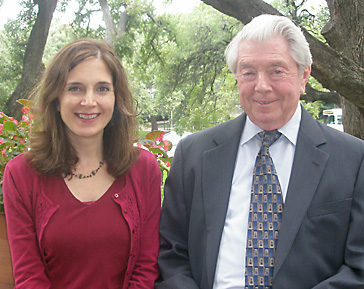
RISE is a non-profit program whose cornerstone is its annual “un-conference” — scheduled May 13-17 this year — in which seasoned entrepreneurs and experts volunteer to host small-group sessions on any topic of their choice at any location of their choice throughout Austin. Sessions are free and limited to 25 to promote a highly collaborative experience.
Put Aggregators to Work for Quality, Timely Info When Trend Searching
November 29, 2012
Part One of a Two-Part Series by Guest Blogger Steve Pearson, Visionex Solutions, LLC

Photo credit: www.mapthis.net: http://mapthis.net/wp-content/uploads/2010/11/searching-for-info.jpg
I was truly inspired by the recent MiniTrends 2012 Conference and collected many ideas for improving my business and for passing along to my clients.
After reading the MINITRENDS book, I’d like to share some additional technical and patent resources that might help others as much as they help me in my business providing research for product development and innovation.
Google is popular, but not a good source for piecing together trends: access to a large amount of content dumped in your lap through a single portal is not efficient.
Fortunately, there are information resources that provide broad data in a bibliographic form that facilitates finding the information you desire. There are three general groups of these resources:
- business/market
- engineering/science
- patents/patent applications
Of course, many of these specialty resources require fees, but they can be invaluable for businesses and researchers needing timely and accurate information.
Some options:
Business news typically consists of new product announcements, merger and acquisition news and management changes. Many executives find it valuable to monitor their key competitors or the top executives in those companies. There’s a wide breadth of providers in this category and some are free. A good place to start is doing a Google search, probably for a specific company’s name, and then filtering the results by clicking on “news” in the grey colored font immediately below the search box. (More on automated news alerts in Part 2 next week.)
Technical resources provide focused information related to newly published research, dissertations and conference proceedings. Consider Inspec which monitors roughly 5,000 scientific and technical journals plus some conferences and dissertations. These originate from around the world but often have an English abstract.
Technical services can be a pricey, but consider the savings the first time you rethink your current or upcoming R&D efforts based on information that your competitor may not know.
Patents and patent application aggregators collect updates from international patent offices and store this bibliographic information in their databases. Many countries make this information available to the public, but the ease of use varies dramatically.
For instance, the USPTO maintains its own search engine for finding relevant intellectual property, but there are several limitations:
- The information is focused solely on the U.S.
- Searching granted patents and patent applications is done through separate search windows
- The results shown to your inquiry will often require a lot of time to review.
- PDF file export is not available.
A better choice for many is Google Patents as it also covers Europe, is fairly simple to use, provides results that are easier to navigate and allows you to export PDFs.
So, why not use Google Patents for all of your work? There are drawbacks as well:
- It doesn’t cover the remainder of the world
- It’s difficult to drill down to the specific patents and applications that are most relevant to your need
- It’s difficult to do trend analysis
Many companies find that the best way to control their time and expense is to hire an intermediary to decipher these resources and conduct research as needs arise.
Next week: Where to Start with Automated Alerts
Guest blogger Steve Pearson is a consultant helping companies accelerate innovation and product development. Through his firm Visionex Solutions, LLC, he delivers competitor-busting research with tools and reports he has developed over his career as an engineer, trainer and analyst.
Steve specializes in intellectual property management, technology identification and market assessment and takes pride in applying lessons from his broad background to help those in the electrical, mechanical, energy, construction or transportation industries. Visit his site for more information.
MiniTrends 2012 Conference – Thanks for Making it a Success!
November 15, 2012
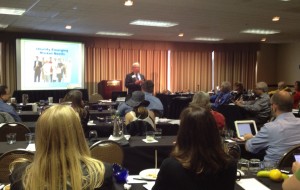 Thank you to all who supported and attended MiniTrends 2012: A Conference on Translating Emerging Trends into Business Opportunities on October 17-18 in Austin, Texas! We enjoyed interacting with everyone and appreciated the contagious enthusiasm. The speakers were fantastic, the synergy between attendees exciting, and the overall response great. Now let’s build on it!
Thank you to all who supported and attended MiniTrends 2012: A Conference on Translating Emerging Trends into Business Opportunities on October 17-18 in Austin, Texas! We enjoyed interacting with everyone and appreciated the contagious enthusiasm. The speakers were fantastic, the synergy between attendees exciting, and the overall response great. Now let’s build on it!
We want to give special thanks to all of our outstanding speakers. A special shout-out goes to our Keynotes John Vanston, David Pearce Snyder, and Bryan Reese whose excellent presentations provided the structure of the conference. Please spread the word on their speaking talents and availability.
 Let’s use the new LinkedIn MiniTrends Group to continue to network and keep the energy going until MiniTrends 2013. Please feel free to share thoughts from the conference and your own minitrends, experiences, and resources. (We may plan a MiniTrends networking and/or educational event or two before the next conference to keep the momentum going.)
Let’s use the new LinkedIn MiniTrends Group to continue to network and keep the energy going until MiniTrends 2013. Please feel free to share thoughts from the conference and your own minitrends, experiences, and resources. (We may plan a MiniTrends networking and/or educational event or two before the next conference to keep the momentum going.)
We also welcome you to “like” us on our Facebook Page. We will be posting pictures of the conference, luncheon, and reception soon.
Please let us know of any progress you make with minitrends that you might uncover and take advantage of, particularly those using concepts from MiniTrends 2012 and the MINITRENDS book. Feel free to send us your ideas and progress or participate in our social media avenues. We are always looking for good examples, and if we use your minitrend, we’ll be sure to give you credit!
Again, thank you for all those who attended and supported MiniTrends 2012. We are looking forward to staying in touch with you until MiniTrends 2013 and welcoming some newcomers, too!
MiniTrends 2012 Conference – Tomorrow – Oct. 17-18, Austin, TX
October 16, 2012
 Discover, Analyze, Profit! Tomorrow is MiniTrends 2012: A Conference on Translating Emerging Trends into Business Opportunities, October 17-18, 2012 at the Omni Austin Hotel Downtown, Austin, Texas. Register now and save $150 by using the discount code 2012Blog. (Promotional box is above green “Register” button.)
Discover, Analyze, Profit! Tomorrow is MiniTrends 2012: A Conference on Translating Emerging Trends into Business Opportunities, October 17-18, 2012 at the Omni Austin Hotel Downtown, Austin, Texas. Register now and save $150 by using the discount code 2012Blog. (Promotional box is above green “Register” button.)
Twenty all-star business leaders and forward thinkers will discuss how you can start new ventures and grow established organizations through attention to MiniTrends–emerging trends that will soon become important, but are not yet widely recognized. Find out what future trends and convergences they see on the horizon and, just as importantly, how you can find profitable emerging trends of your own.
- An Entrepreneur wishing to identify, assess, and exploit attractive new business opportunities
- An Executive, Director, Manager, or Professional seeking to take advantage of important emerging trends
- An Innovative Thinker interested in gaining recognition for your originality and perceptiveness
- An Investor interested in uncovering attractive new investment opportunities
- A Job Seeker wishing to define emerging employment possibilities
Fun and entrepreneurial-spirited Austin offers the ideal location for to learn and network with others, while finding strategies and insights to create or grow their organization or find new avenues for job skills.
Don’t miss out on this extraordinary conference with such an exceptional depth and breadth of speaker talent and solid schedule. Save $150 by registering using the code 2012Bonus! (Promotional box is above green “Register” button.)
What you will gain:
- A creative mind-set and resources for finding and taking advantage of emerging trends and opportunities relating to your own area of expertise and interest
- A preview of MiniTrends that thought-leaders see developing
- Experience, knowledge, and wisdom from innovative leaders sharing how they use emerging trends to start new ventures or grow established organizations
- Tactics to identify untapped business opportunities from converging trends
- Interaction with speakers and fellow participants to learn, mix, and share ideas
- Strategy and insights to create or grow your organization and, in the process, find your bliss!
- An opportunity to enjoy the Live Music Capital of the World!
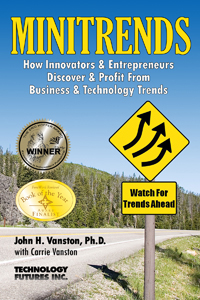 BONUS!!! In addition to information, ideas, and insights to participants for discovering, analyzing, and profiting from minitrends, all participants will receive the award-winning book MINITRENDS: How Innovators & Entrepreneurs Discover & Profit From Business & Technology Trends.
BONUS!!! In addition to information, ideas, and insights to participants for discovering, analyzing, and profiting from minitrends, all participants will receive the award-winning book MINITRENDS: How Innovators & Entrepreneurs Discover & Profit From Business & Technology Trends.
___________
MiniTrends 2012: A Conference on Translating Emerging Trends into Business Opportunities
Wednesday, October 17, 1:30 p.m. – 5:30 p.m. & Thursday, October 18, 8:30 a.m. – 5:30 p.m. followed by conference reception until 7:15 p.m.
Registration: $495 – Use code 2012BLOG and receive a $150 discount!
MiniTrends 2012 Conference – Only Five Days Left – Oct. 17-18, Austin, TX
October 12, 2012
 Discover, Analyze, Profit! Only five days left until MiniTrends 2012: A Conference on Translating Emerging Trends into Business Opportunities, October 17-18, 2012 at the Omni Austin Hotel Downtown, Austin, Texas. Register now and save $150 by using the discount code 2012Blog. (Promotional box is above green “Register” button.)
Discover, Analyze, Profit! Only five days left until MiniTrends 2012: A Conference on Translating Emerging Trends into Business Opportunities, October 17-18, 2012 at the Omni Austin Hotel Downtown, Austin, Texas. Register now and save $150 by using the discount code 2012Blog. (Promotional box is above green “Register” button.)
Twenty all-star business leaders and forward thinkers will discuss how you can start new ventures and grow established organizations through attention to MiniTrends–emerging trends that will soon become important, but are not yet widely recognized. Find out what future trends and convergences they see on the horizon and, just as importantly, how you can find profitable emerging trends of your own.
- An Entrepreneur wishing to identify, assess, and exploit attractive new business opportunities
- An Executive, Director, Manager, or Professional seeking to take advantage of important emerging trends
- An Innovative Thinker interested in gaining recognition for your originality and perceptiveness
- An Investor interested in uncovering attractive new investment opportunities
- A Job Seeker wishing to define emerging employment possibilities
Fun and entrepreneurial-spirited Austin offers the ideal location for to learn and network with others, while finding strategies and insights to create or grow their organization or find new avenues for job skills.
Don’t miss out on this extraordinary conference with such an exceptional depth and breadth of speaker talent and solid schedule. Save $150 by registering using the code 2012Bonus! (Promotional box is above green “Register” button.)
What you will gain:
- A creative mind-set and resources for finding and taking advantage of emerging trends and opportunities relating to your own area of expertise and interest
- A preview of MiniTrends that thought-leaders see developing
- Experience, knowledge, and wisdom from innovative leaders sharing how they use emerging trends to start new ventures or grow established organizations
- Tactics to identify untapped business opportunities from converging trends
- Interaction with speakers and fellow participants to learn, mix, and share ideas
- Strategy and insights to create or grow your organization and, in the process, find your bliss!
- An opportunity to enjoy the Live Music Capital of the World!
 BONUS!!! In addition to information, ideas, and insights to participants for discovering, analyzing, and profiting from minitrends, all participants will receive the award-winning book MINITRENDS: How Innovators & Entrepreneurs Discover & Profit From Business & Technology Trends.
BONUS!!! In addition to information, ideas, and insights to participants for discovering, analyzing, and profiting from minitrends, all participants will receive the award-winning book MINITRENDS: How Innovators & Entrepreneurs Discover & Profit From Business & Technology Trends.
___________
MiniTrends 2012: A Conference on Translating Emerging Trends into Business Opportunities
Wednesday, October 17, 1:30 p.m. – 5:30 p.m. & Thursday, October 18, 8:30 a.m. – 5:30 p.m. followed by conference reception until 7:15 p.m.
Registration: $495 – Use code 2012BLOG and receive a $150 discount!
Age of Imagination With MiniTrends – GigaOm Blog – Dr. John Vanston
October 6, 2012

Dr. John Vanston guest blog’s on GigaOm: “In the Age of Information, Small Trends have Big Impacts.” Image “future1” courtesy of GigaOm. Used under Creative Commons license.
Dr. John Vanston is giving a great opening presentation at MiniTrends 2012: A Conference on Translating Emerging Trends into Business Opportunities entitled “Succeeding in the Age of Imagination with Minitrends.” John gives a preview of the talk in his GigaOm guest blog In the Age of Information, Small Trends have Big Impacts. We highly suggest you read it.
We greatly appreciate Stacey Higginbotham‘s interest in publishing the article. We’ve been friends with Stacey since her days at the Austin Business Journal and are thrilled to see her success at the very prestigious GigaOm.
We still have opening for MiniTrends 2012! The breadth and depth of the speaking talent and schedule is exceptional. Twenty all-star business leaders and forward thinkers will identify impending trends and convergences and help you profitably exploit them. This is a must-attend event for entrepreneurs, decision makers, innovative thinkers, investors, and/or job seekers whose fortunes depend on seeing and seizing business trends. And fun and entrepreneurial-spirited Austin offers the ideal location.
Don’t miss out on this great opportunity to learn and network with others, while finding strategies and insights to create or grow your own organization or find new avenues for your job skills.
In appreciation for your being a MiniTrends Blog subscriber, register now using the code 2012BLOG and receive a $150 discount! Enter code in the “Enter Promotional Code” immediately above the large green Registration button.
___________
 MiniTrends 2012: A Conference on Translating Emerging Trends into Business Opportunities
MiniTrends 2012: A Conference on Translating Emerging Trends into Business Opportunities
Wednesday, October 17, 1:30 p.m. – 5:30 p.m. & Thursday, October 18, 8:30 a.m. – 5:30 p.m. followed by conference reception until 7:15 p.m.
Register with code 2012BLOG and receive a $150 discount!
MiniTrends 2012 Conference – Early Registration Ends Today
October 3, 2012
- An Entrepreneur wishing to identify, assess, and exploit attractive new business opportunities
- A Decision Making Executive, Director, Manager, or in a Small or Mid-Size Business wanting to gain advantage by recognizing and utilizing emerging trends
- An Innovative Thinking Executive, Director, Manager, or Professional in a Larger Business aspiring to distinguish yourself by your special insights and perceptiveness
- An Investor interested in uncovering attractive new investment opportunities
- A Job Seeker wishing to define employment opportunities
You will gain:
- A creative mind-set and resources for finding and taking advantage of emerging trends and opportunities relating to your own area of expertise and interest
- A preview of minitrends that thought-leaders see developing
- Experience, knowledge, and wisdom from innovative leaders sharing how they use emerging trends to start new ventures or grow established organizations
- Tactics to identify business opportunities from converging trends
- Interaction with speakers and fellow participants to learn, mix, and share ideas
- Strategy and insights to create or grow your organization and, in the process, find your bliss
- Hanging out in the Live Music Capital of the World!
A day and half conference of this caliber is usually priced at $1,000 or much more. Register TODAY and pay only $395. The price is still a very reasonable $495 after that.
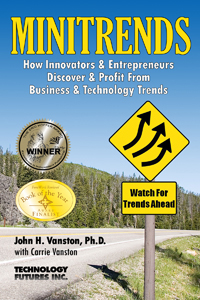 BONUS!!! All participants will receive the award-winning book MINITRENDS: How Innovators & Entrepreneurs Discover & Profit From Business & Technology Trends.
BONUS!!! All participants will receive the award-winning book MINITRENDS: How Innovators & Entrepreneurs Discover & Profit From Business & Technology Trends.
Take advantage of Early Registration and sign up TODAY! Don’t miss out on this great opportunity to learn and network with others, while finding strategies and insights to create or grow your own organization or find new avenues for your job skills.
___________
MiniTrends 2012: A Conference on Translating Emerging Trends into Business Opportunities
Wednesday, October 17, 1:30 p.m. – 5:30 p.m. & Thursday, October 18, 8:30 a.m. – 5:30 p.m. followed by conference reception until 7:15 p.m.
Early Registration: Only $395.00 until October 3 (then $495.00)
MiniTrends 2012 – Early Registration Ends Oct 3 – Register Now
September 28, 2012
Discover, Analyze, Profit! Longtime Austin-based Technology Futures, Inc. (TFI) is hosting an important conference, MiniTrends 2012: A Conference on Translating Emerging Trends into Business Opportunities, on October 17-18, 2012 at the Omni Austin Hotel Downtown, Austin, Texas. Early Registration ends Wednesday, October 3!
Don’t miss out on this extraordinary price for a conference with such an exceptional depth and breadth of speaker talent. Register now before the October 3 Early Registration deadline and save $100!
Twenty all-star business leaders and forward thinkers will discuss how you can start new ventures and grow established organizations through attention to MiniTrends–emerging trends that will soon become important, but are not yet widely recognized. Find out what future trends and convergences they see on the horizon and, just as importantly, how you can find profitable emerging trends of your own.
Fun and entrepreneurial-spirited Austin offers the ideal location for entrepreneurs, decision makers, innovative thinkers, investors, and job seekers to learn and network with others, while finding strategies and insights to create or grow their organization or find new avenues for job skills.
The regular price of $495 is a steal for a conference of this caliber, but with Early Registration by October 3, you pay only $395. (Promotional box is immediately above big “Register” button.)
In addition to our many other exceptional speakers, our Keynote Speakers are:
- Award-winning author and and Chairman of TFI Dr. John Vanston showing how to use MiniTrends to succeed in the “Age of Imagination”
- World-renowned Futurist David Pearce Snyder introducing the “New Normal” and its opportunities in the decade ahead
- High-tech trailblazer Byron Reese, CIO at Demand Media, assuring us that emerging trends will bring a “Golden Age of Humanity”
 BONUS!!! In addition to information, ideas, and insights to participants for discovering, analyzing, and profiting from minitrends, all participants will receive the award-winning book MINITRENDS: How Innovators & Entrepreneurs Discover & Profit From Business & Technology Trends.
BONUS!!! In addition to information, ideas, and insights to participants for discovering, analyzing, and profiting from minitrends, all participants will receive the award-winning book MINITRENDS: How Innovators & Entrepreneurs Discover & Profit From Business & Technology Trends.
MiniTrends 2012: A Conference on Translating Emerging Trends into Business Opportunities
Wednesday, October 17, 1:30 p.m. – 5:30 p.m. & Thursday, October 18, 8:30 a.m. – 5:30 p.m. followed by conference reception until 7:15 p.m.
Early Registration: Only $395.00 until October 3 (then $495.00)



